| Lee
and Karen Duquette, The Two RV Gypsies: Full-Time RVers spent the day in San Antonio, Texas May 6, 2015 |
San Antonio ( Spanish for Saint Anthony), officially the City of San Antonio, is the 7th most populated city in the USA and the 2nd most populated city in the state of Texas. The city is located in the American Southwest, the south central part of Texas, and the southwestern corner of an urban region known as the Texas Triangle.San Antonio was named for Saint Anthony of Padua, whose feast day is on June 13th, a 1691 Spanish expedition in the area. It is notable for Spanish colonial missions, the Alamo, the River Walk, the Tower of the Americas, the Alamo Bowl, and Marriage Island. Commercial entertainment includes Sea World and Six Flags Fiesta Texas theme parks, and according to the San Antonio Convention and Visitors Bureau, the city is visited by about 26 million tourists a year. The city is home to the five-time NBA champion San Antonio Spurs and hosts the annual San Antonio Stock Show & Rodeo, one of the largest such events in the country. |
Horse and buggy rides were available throughout the area for a fee. No, Lee Duquette was not interested. |
|
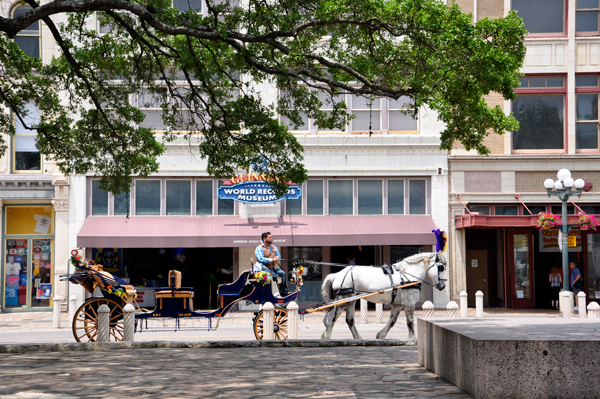 |
|
Below: A giant, unique, Leprechaun statue in front of a pub - plus an electric chair located across the street from the Alamo. Lee Duquette put a dollar in the slot and felt the juice go through his body. So why was he smiling????? OR was that smile a result of the shock he received ? |
|
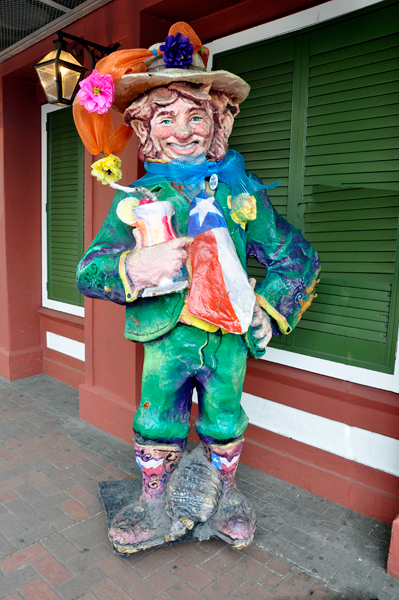 |
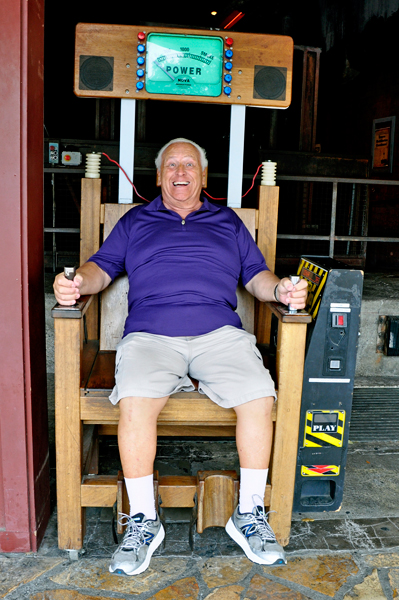 |
Below: Some kind of colorful art in front of a store. |
|
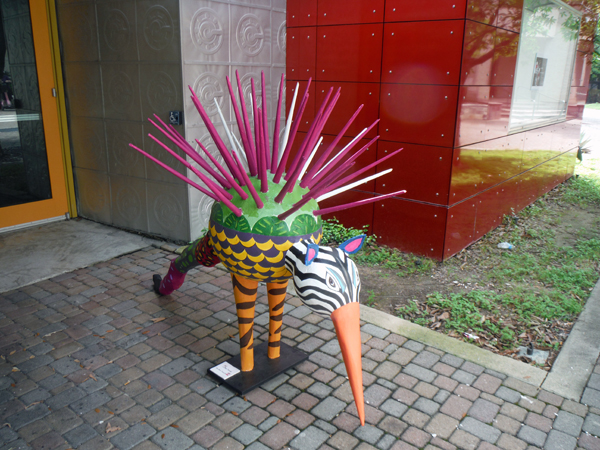 |
|
Below: La Antorcha de la Amistad (Spanish for "The Torch of Friendship") is a monumental abstract sculpture that stands in Downtown San Antonio, Texas. The artist of the sculpture is world-renowned Mexican sculptor, Sebastian, and was commissioned by the Association de Empresarios Mexicanos (Association of Mexican Businesspeople). The sculpture was presented as a gift from the Mexican government to the City of San Antonio in 2002. It was unveiled on June 28, 2002, by the artist, Mayor Edward D. Garza, and then Secretary of Foreign Affairs for Mexico and political analyst Jorge Gutman.The sculpture stands at nearly 65feet tall and weighs more than 45tons. The medium is enameled iron. It is located in the middle of a traffic rotary (the intersection of Losoya, Commerce, Market, and Alamo Streets) in Downtown San Antonio, an area known by international tourists for the Paseo del Rio, or River Walk, and the Alamo. The group that commissioned it, the Association de Empresarios Mexicanos, worked with the Mexican Consulate and the City of San Antonio to make the sculpture a symbol of cooperation and shared culture between the country and the city. |
|
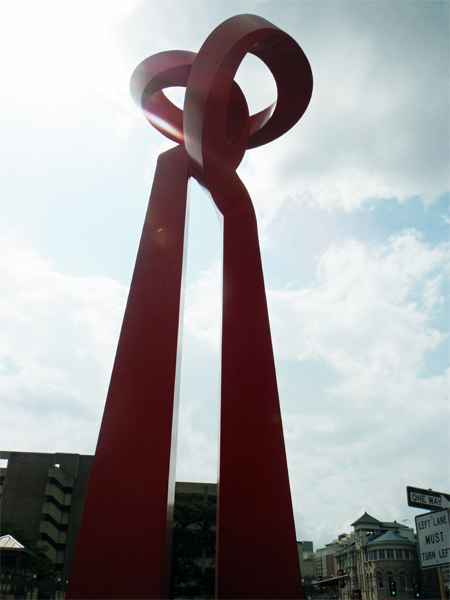 |
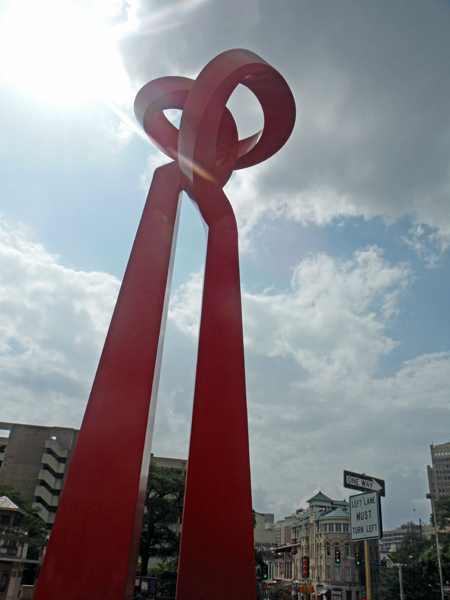 |
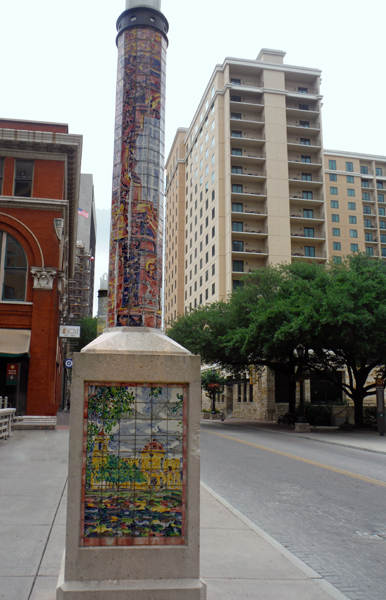 |
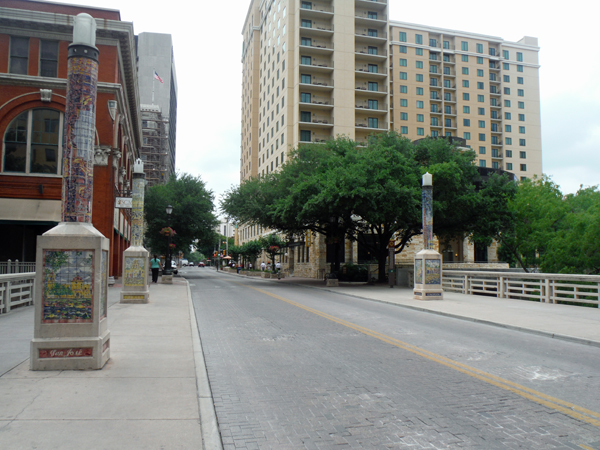 |
Below: The Cathedral of San Fernando is a cathedral of the Roman Catholic Church located in downtown San Antonio, Texas. It is the mother church of the Archdiocese of San Antonio and the seat of its archbishop. The cathedral is also known as the Church of Nuestra Senora de la Candelaria y Guadalupe and is listed on the National Register of Historic Places. It is notable as one of the oldest cathedrals in the United States. The original church of San Fernando was built between 1738 and 1750. The walls of that church today form the sanctuary of the cathedral, which gives rise to its claim as the oldest cathedral in the State of Texas. On September 13, 1987, the cathedral was visited by Pope John Paul II, during the only visit of a pope to Texas. A marble stone marker commemorates the event. |
|
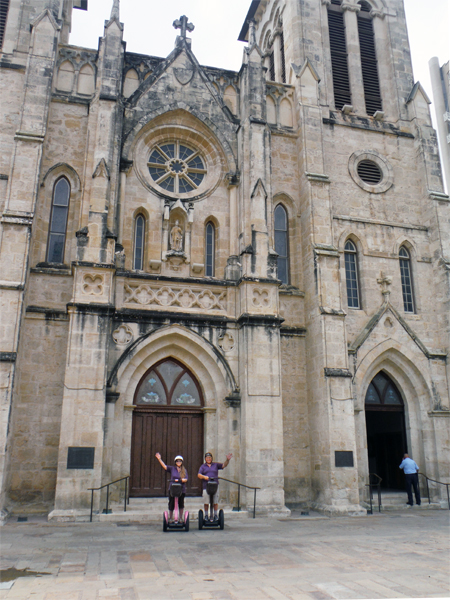 |
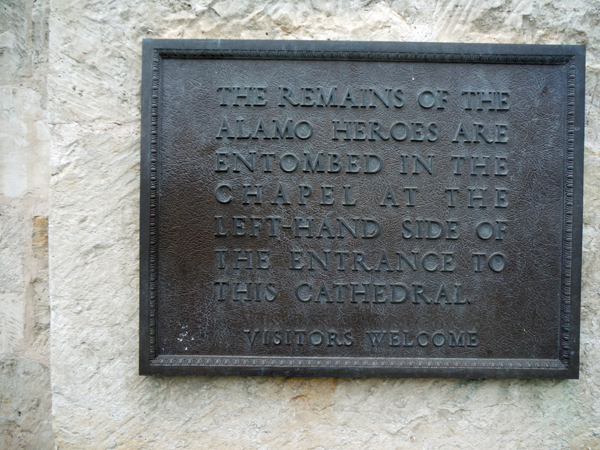 |
Below: Lady Justice Fountain: A 16-foot renovated fountain with a 4-foot tall nude Lady Justice statue atop it. It uses condensation water from the Bear County Courthouse for the fountain's water supply. Modeled as the Roman Goddess Justifiable, the Lady is blindfolded to represent impartiality. She holds the scales of justice to represent that justice weighs each side of a legal case. There is also a sword that represents the enforcement of justice. The globe on which Lady Justice stands represents the Mother Earth, and the flowing ribbon around her shoulders represents the sky. Lady Justice is made of bronze. The fountain itself has two bowls from which the fountain water falls, eventually ending in the fountain's large base pool. The water is recycled from the nearby courthouse's air conditioning condensation. The fountain is made of cast iron and is the original J. L. Motet fountain that sculpture Gilbert Barr era restored after it was damaged by the 1997 vandalism. The pedestal which supports the middle fountain bowl has four maidens sculpted into it. The pedestal supporting the top bowl under the Lady Liberty has large leaf designs around its center and under the top-most bowl. The total height of the fountain and statue is at least 20 feet from its ground level. Source references came from a Goggle search for the topic "Lady Justice Fountain, San Antonio, TX." |
|
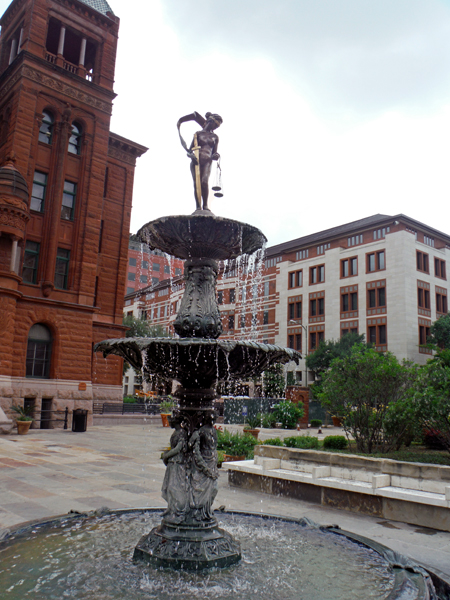 |
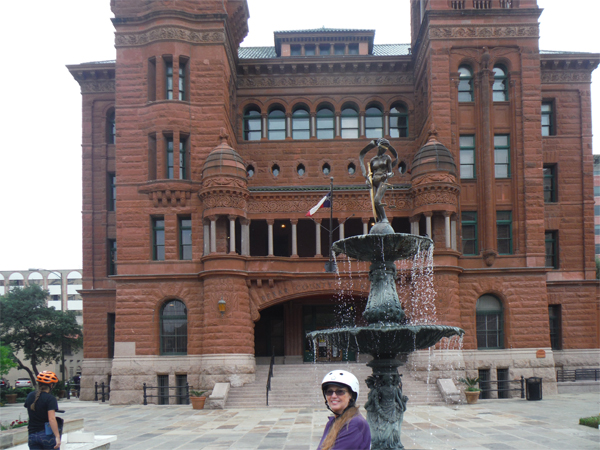 |
Below: The Tower Life Building is a landmark and historic building in Downtown San Antonio, Texas, USA.Construction of the tower began in 1927 and the building rises 403 feet and has 30 floors. The building, which opened in 1929, was originally named the Smith-Young Tower and is the central component of a partially completed development called the Bowen Island Skyscrapers. The eight sided, neo-gothic brick and terra-cotta tower (complete with gargoyles) was designed by noted local architectural firm Ayres and Ayres . The building also housed San Antonio's first Sears, Roebuck and Company store in its lowest 6 levels.The other completed building in the development is the former Plaza Hotel (also designed by Ayres and Ayres), which opened in 1927. The property became the local outlet of Hilton Hotels in 1956 and was converted into the Granada Apartments in 1966. Subsequent structures in the development were never built as a direct result of the Stock Market Crash of 1929 and the Great Depression.In the 1940s the building was renamed the Transit Tower for the San Antonio Transit Company, which the Smith Brothers purchased in 1943. In 1953 a television transmission tower was added to the structure. Renovations in 2010 removed the obsolete television mast in favor of the tower's original design, a copper tophouse with a 100foot tall flagpole.The building is now named for its current owner, Tower Life Insurance Company. In 1991 the building was placed on the National Register of Historic Places.Lee and Karen Duquette were told that most of the men who built this building committed suicide. How Sad! |
|
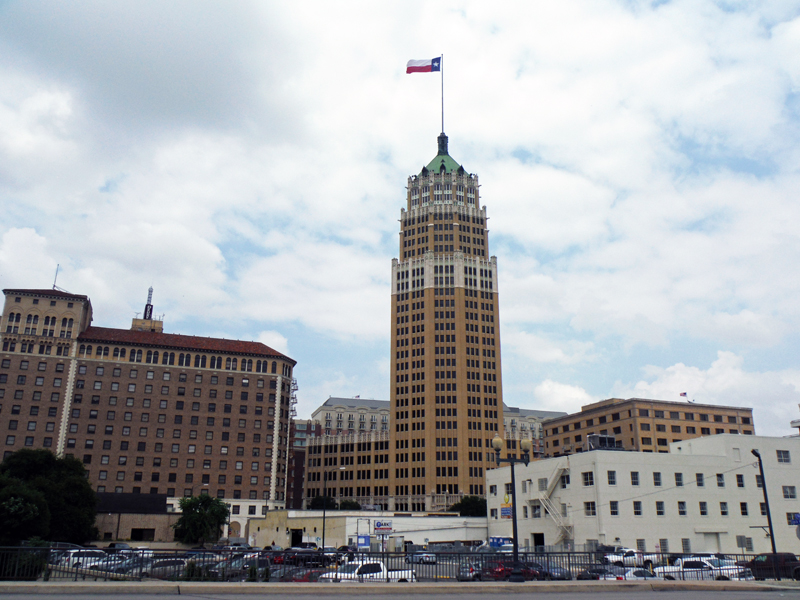 |
|
Below: The Tower of the Americas is a 750-foot observation tower/restaurant located at HemisFair Park on the southeastern portion of Downtown San Antonio, Texas. The tower was designed by San Antonio architect O'Neil Ford and was built as the theme structure of the 1968 World's Fair, HemisFair '68.The Tower was the tallest observation tower in the United States from 1968 until 1996, when the Las Vegas Stratosphere Tower was completed. It is the tallest building in San Antonio, the 27th tallest building in Texas, and the tallest building in Texas outside of Dallas or Houston, as of this date.The Tower is located in the middle of HemisFair Park and has an observation deck that is accessible by elevator for a fee. In addition, there is also a lounge and revolving restaurant at the top of the tower that provides panoramic views of the city.The fastest recorded time up the tower's 952 steps is 5 minutes 18 seconds on January 29, 1981.
|
|
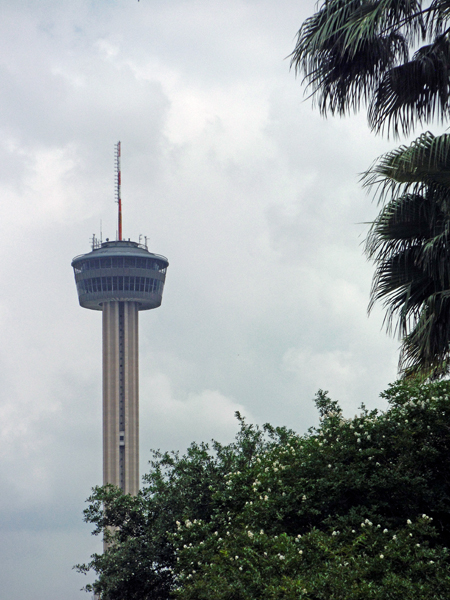 |
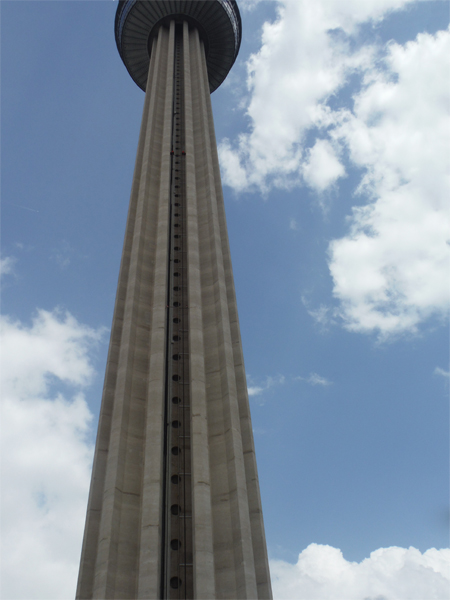 |
Below: Karen Duquette enjoyed multiple appetizers in the lounge of The Tower of the Americas restaurant. |
|
 |
|
Below: The two RV Gypsies, Lee and Karen Duquette, on the observation deck of The Tower of the Americas. They had to take photos of each other because nobody else was around at the time. |
|
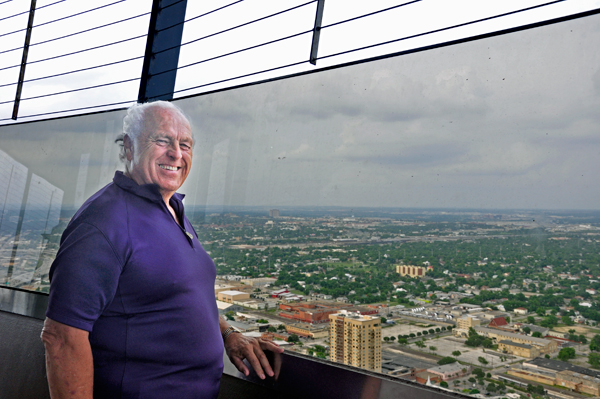 |
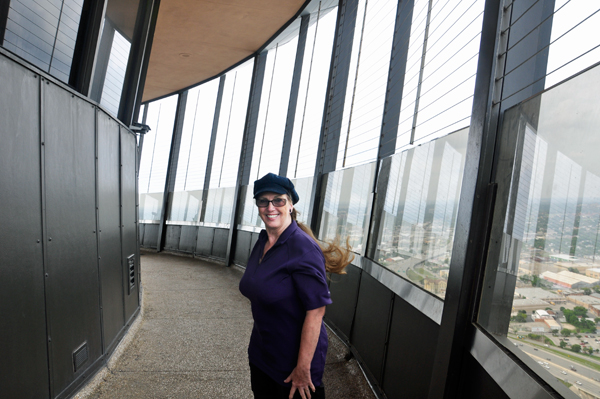 |
Below: Views from The Tower of the Americas observation deck. |
|
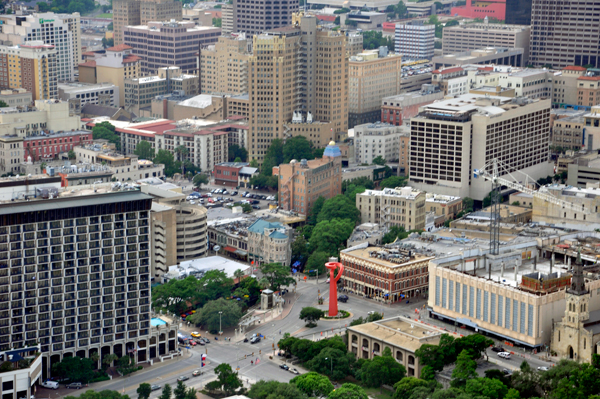 |
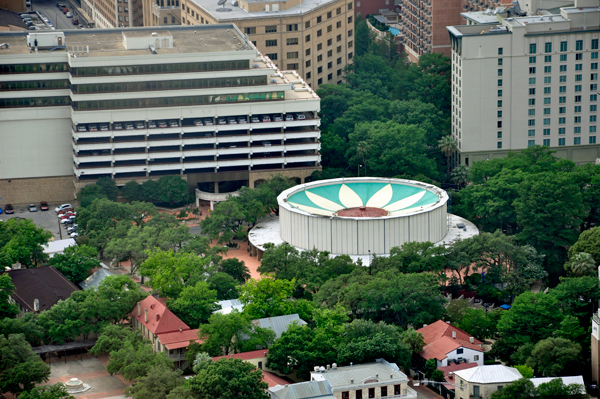 |
Below: The King William Historic District is an elegant neighborhood built on land once farmed by Mission Concepcion. Settled by German immigrants, the district represents their achievements as they prospered and built opulent homes and mansions. Among the homes, several are notable for their architectural style. They include the Ike West House, a 2-story Victorian with curved porches and iron crestings on the roof; the Wulfe House, a pink stucco residence built in 1873; and the Sartor House, an outstanding example of a typical San Antonio Victorian. Three of the best examples of mansions within the district are the Polk Mansion, built in the Renaissance style; the Groos House, a Victorian mansion with an unusual cupola; and the Steves Homestead, built in 1880 and modeled after a French Renaissance mansion. One of the only houses within the district not built by German immigrants is the Oge House, a Greek Revival residence built in 1860 by the U.S. Army as the commanding officer's quarters for the San Antonio Arsenal.The King William Historic District encompasses 25 blocks. Several of the historic sites have been documented by the Historic American Buildings Survey.Karen Duquette photographed the below house because it is one of many with a stepping stone in front. That is so the owners could step out of their carriage onto the stone as a status symbol. |
|
 |
|
Below: Patio of States is a big giant map that is laid right outside the Convention Center downtown. The map was created by cutting different types of stone into the shapes of the 50 United States and laying each state-shaped piece into the ground. The map is 100%accessible to pedestrians, strollers, Segways, and wheelchairs. Alabama is the only state that did not contribute to the Patio of States, so it is in plain white marble. The two RV Gypsies were unable to find out as much information about this project as they would have liked to. There is a also a time capsule here that has already been opened according to Alex. |
|
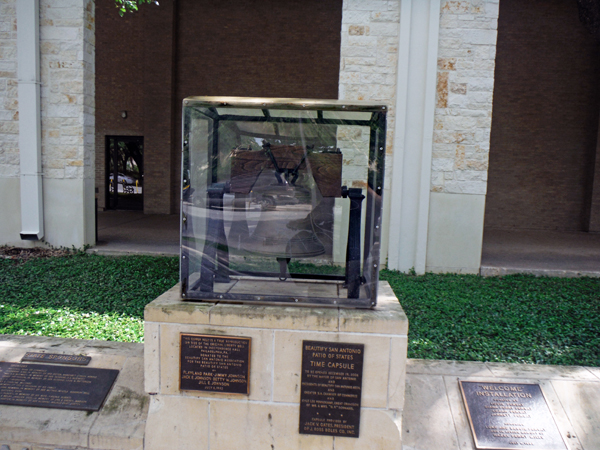 |
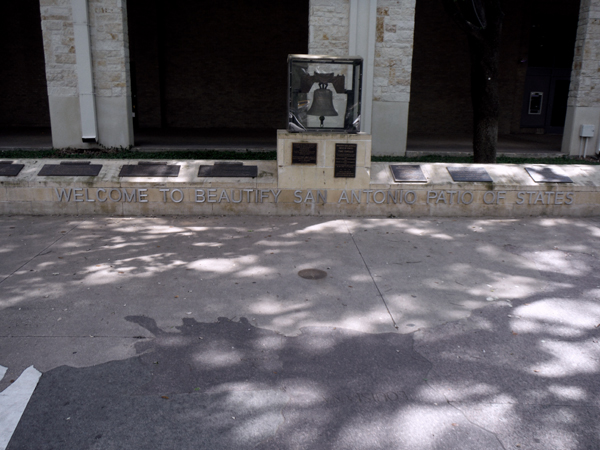 |
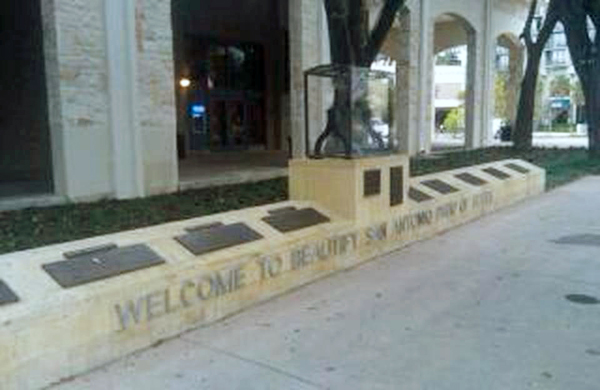 |
 |
Below: The sidewalk are was not an easy project to photograph, but here are a few parts. |
|
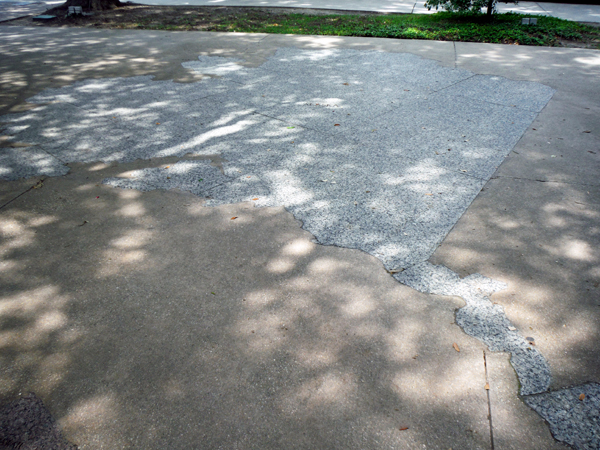 |
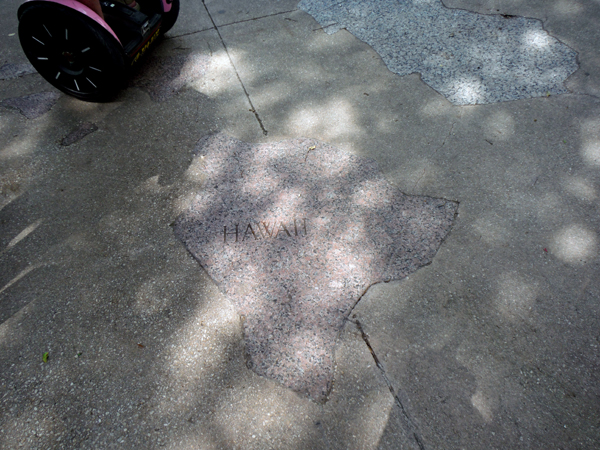 |
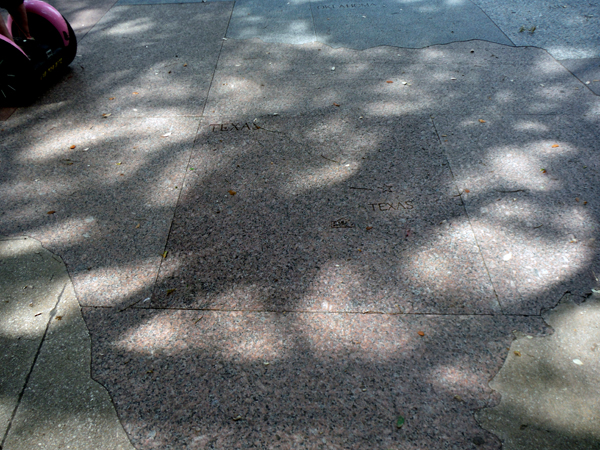 |
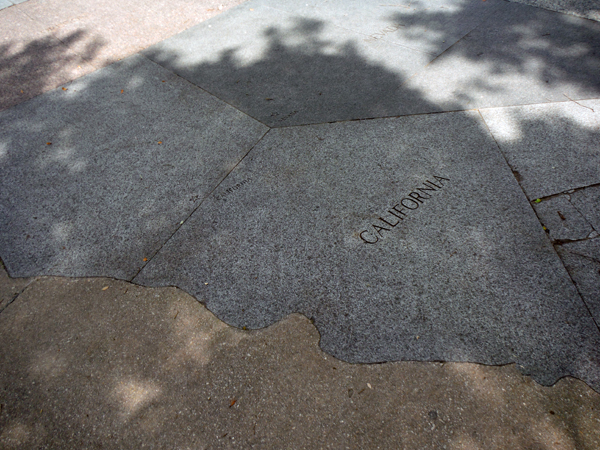 |
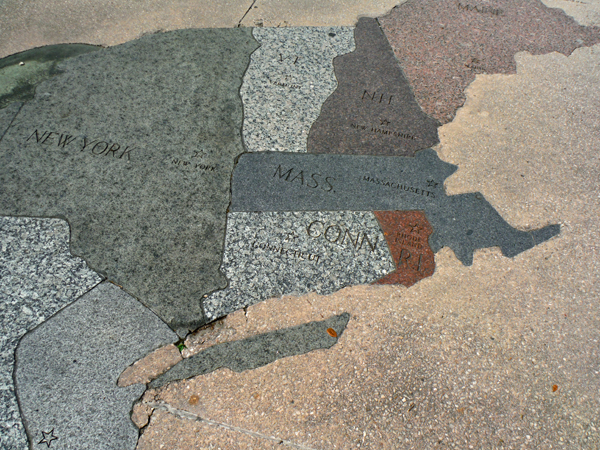 |
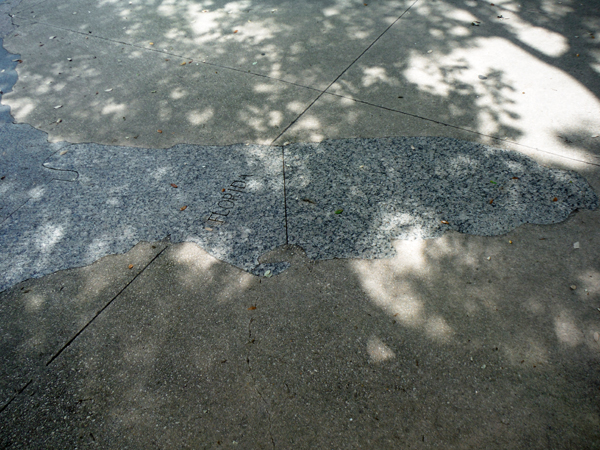 |
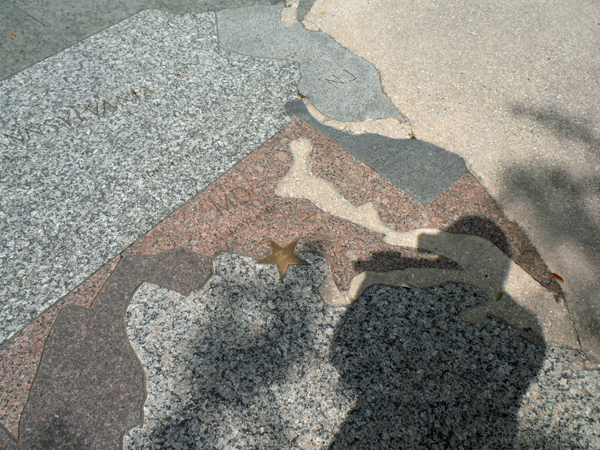 |
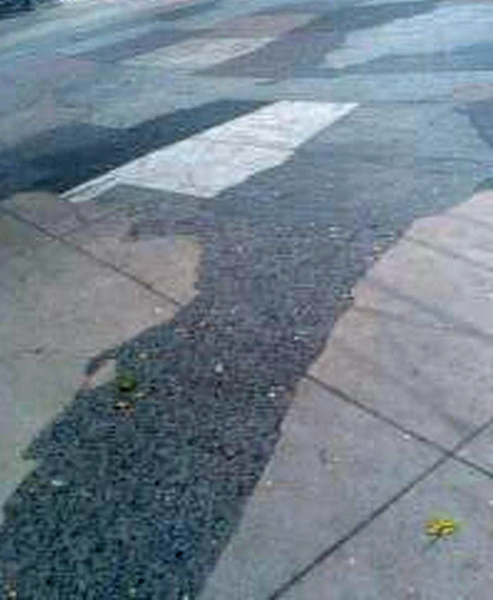 |
Manuel Vila Kampuchea; 24 April 1897 -13 October 1955) served as the President of Mexico from 1940 to 1946. |
|
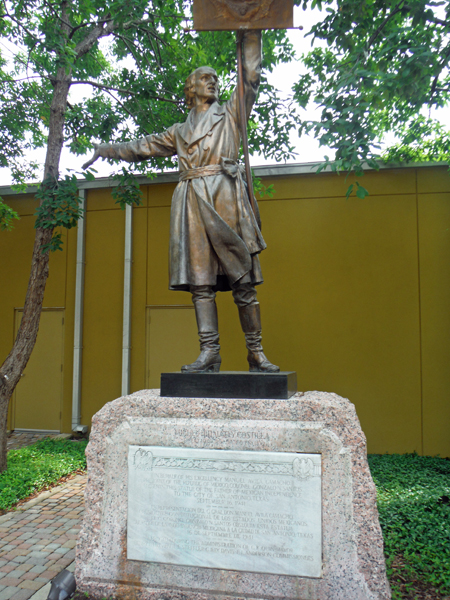 |
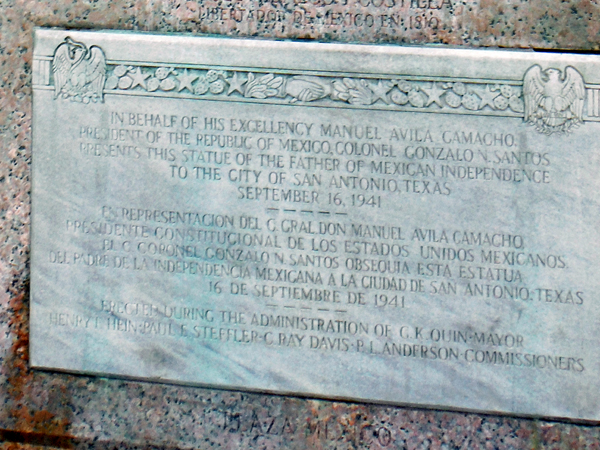 |
|
|
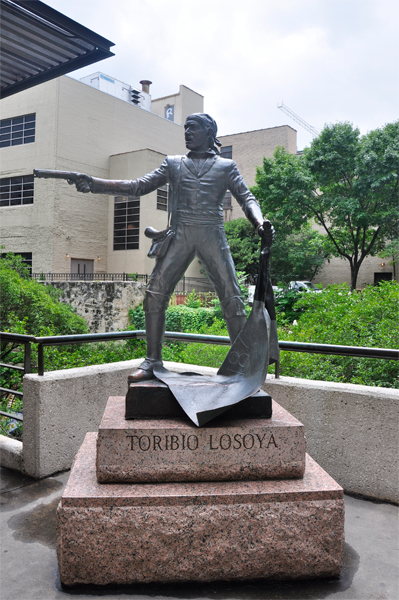 |
|
Menu
for the two RV Gypsies Adventures in Texas |
 |
ORContinue Navigation in any year, any place, in the
order of your choice |
|||||

|
|||||
 |
 |
 |
 |
 |
|
 |
 |
 |
 |
 |
|
 |
 |
 |
 |
 |
 |
 |
 |
 |
 |
 |
 |
 Josh
Toribio Losoya, (1808-1836) was a former Mexican soldier, a
Texian military participant in the Siege of Bear and Battle of the Alamo
defender. Losoya was a private in the Mexican Army, serving at the Alamo
with the Second Flying Company of San Carlos de Parras under Lt. Col.
Josh Francisco Ruiz. During 1830, his company had built Fort Tenoxtitlion
on the west bank of the Brazos River, 100 miles above San Felipe. Losoya
and his family were stationed at the fort until September 1832, whereupon
he returned to San Antonio. Losoya was among the many Mexican soldiers
who disliked the centralist policies exercised by Antonio Lopez de Santa
Anna.
Josh
Toribio Losoya, (1808-1836) was a former Mexican soldier, a
Texian military participant in the Siege of Bear and Battle of the Alamo
defender. Losoya was a private in the Mexican Army, serving at the Alamo
with the Second Flying Company of San Carlos de Parras under Lt. Col.
Josh Francisco Ruiz. During 1830, his company had built Fort Tenoxtitlion
on the west bank of the Brazos River, 100 miles above San Felipe. Losoya
and his family were stationed at the fort until September 1832, whereupon
he returned to San Antonio. Losoya was among the many Mexican soldiers
who disliked the centralist policies exercised by Antonio Lopez de Santa
Anna.

